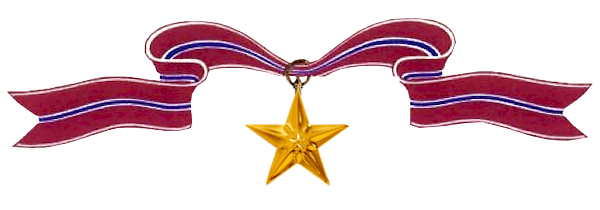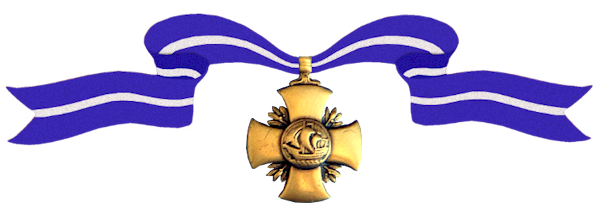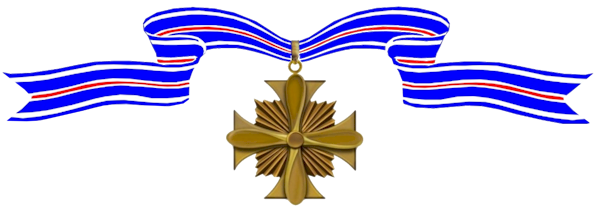James Rigg became a World War II Navy DOUBLE ACE, credited with shooting down eleven enemy aircraft in aerial combat. He retired in 1963 as a U.S. Navy Captain.

–
Awards Received
-

Bronze Star Medal
-

Navy Cross
-
Bronze Star Medal
Service:
United States NavyRank:
Commander [then Lieutenant Commander]Action Date:
January 27 – September 2, 1945
The President of the United States of America takes pleasure in presenting the Bronze Star Medal to Commander [then Lieutenant Commander] James Francis Rigg (NSN: 0-79142), United States Navy, for meritorious achievement as Officer-in-Charge of Training of Carrier Air Groups on the Staff of Commander Air Force, Pacific Fleet, in connection with operations against enemy Japanese forces in the Pacific War Area from 27 January 1945 to 2 September 1945. Directing the training of carrier air groups in the Hawaiian area, Commander Rigg supervised all their activities, evaluated their readiness for combat, corrected deficiencies as they became apparent and modified and improvised the training syllabi as necessary. Utilizing his previous combat knowledge, he skillfully prepared twenty-seven carrier and light carrier air groups and ten escort carrier air groups for combat, with a margin of superiority over the enemy which reduced our operational losses to a minimum. Commander Rigg contributed materially to the success of our forces against the enemy. By his professional ability and sound judgment, he upheld the highest traditions of the United States Naval Service.
-
Navy Cross
Service:
United States NavyRank:
Lieutenant CommanderBatallion:
Fighting Squadron 15 (VF-15)Division:
U.S.S. Essex (CV-9)Action Date:
September 12, 1944
Commander 1st Carrier Task Force Pacific: Serial 0762 (October 29, 1944)The President of the United States of America takes pleasure in presenting the Navy Cross to Lieutenant Commander James Francis Rigg (NSN: 0-79142), United States Navy, for extraordinary heroism in operations against the enemy while serving as Pilot of a carrier-based Navy Fighter Plane in Fighting Squadron FIFTEEN (VF-15, attached to the U.S.S. ESSEX (CV-9), while serving as the Leader of a flight of carrier based fighter planes in the vicinity of the Philippine Islands, on 12 September 1944. So ably did Lieutenant Commander Rigg lead his flight that seventeen enemy fighter planes were destroyed and control of the air was assured for the bombing attack which followed. He personally accounted for five enemy fighter planes, while airborne, and his courage and leadership were at all times inspiring and in keeping with the highest traditions of the United States Naval Service.


